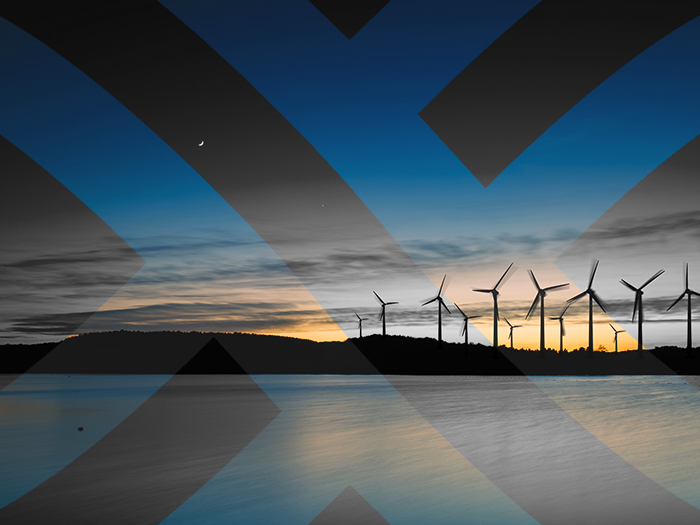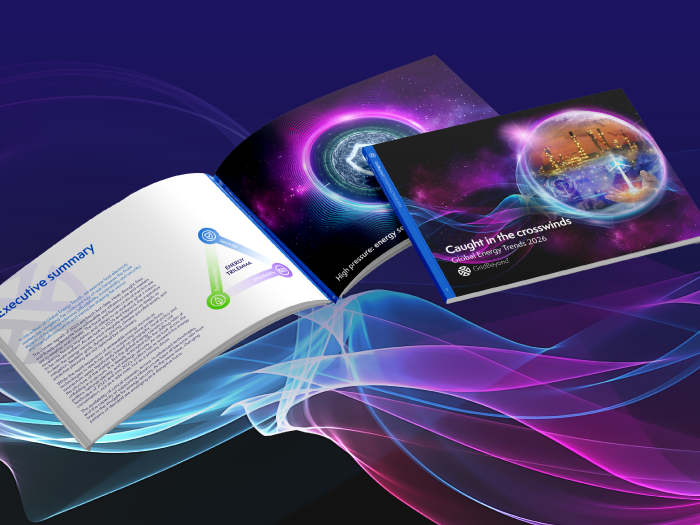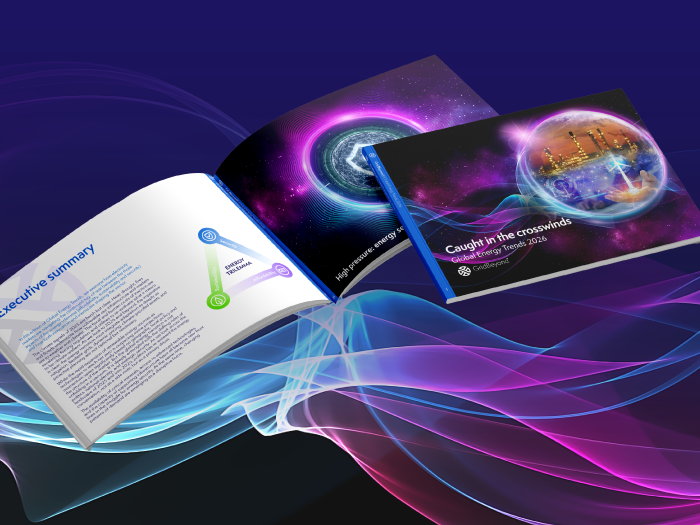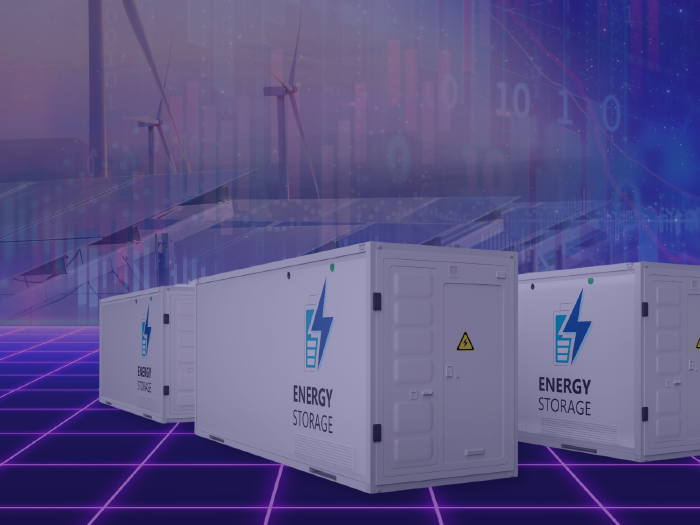News
better business decisions
Posted 1 month ago | 5 minute read

Q&A: How AI and digital twins are transforming demand response
By combining AI and digital twin technology, organisations, utilities and grid operators gain a powerful toolkit for monitoring, forecasting, simulating and acting, all in real-time. The benefits are clear: improved efficiency and cost savings, enhanced grid reliability and resilience, better integration of renewables, and long-term sustainability gains.
In this article we spoke to GridBeyond’s Head of DSR Services Shawn Duckett to find out how investing in an AI-driven digital twin offers businesses the opportunity to take demand response to the next level.
What are “digital twins” and how does artificial intelligence (AI) play into them?
A digital twin is a virtual representation of a physical asset, system or process that continuously receives real-world data and reflects the current state of its counterpart. When paired with artificial intelligence, the digital twin doesn’t just mirror reality: it analyses, learns, predicts and optimises.
AI algorithms embedded within the twin allow it to detect anomalies, forecast future behaviour and recommend or even execute corrective actions. In the energy and demand response context, that means you create a digital model of, say, a building, a microgrid, or a set of distributed energy-resources (DERs), feed in real-time sensor data, apply AI to derive insights and then use those insights to respond to shifts in demand or supply.
Why is demand response especially suited to AI-driven digital twins?
Demand response involves dynamically adjusting energy consumption or load in response to supply conditions, price signals or grid stability requirements. Because it is inherently about change, timing and optimisation, it benefits from tools that can monitor in real time, forecast what’s coming, test scenarios and execute responses.
Given that demand response is all about adjusting consumption or load dynamically, the combination of digital twins + AI creates a powerful platform for smarter, faster, and more optimal responses. An AI-powered digital twin offers real-time monitoring of loads, assets, DERs and grid signals. Predictive modelling of demand spikes, supply shortfalls or renewable variability. Simulated scenario testing so that operators can plan responses ahead of time. Automated or semi-automated control reduce latency between “issue detected” and “action taken”.
What are the key benefits when you apply AI-driven digital twins in demand response?
When AI and digital twin technologies are applied to demand response, they bring about benefits that extend well beyond traditional load management.
AI models have the ability to analyse both historical and real-time data, identifying patterns and predicting shifts in demand or supply. With these insights, energy systems can act pre-emptively, shifting loads or offering incentives for demand curtailment before imbalances occur. The result is more accurate forecasting, fewer unexpected spikes, reduced over-provisioning, and an overall more efficient use of grid resources.
A major advantage of digital twins lies in their capacity to simulate and test multiple scenarios in a virtual environment. Whether the system faces a sudden drop in renewable generation or an unexpected surge in demand, the digital twin can model responses and recommend the most effective strategy. These simulations empower grid operators to plan and execute load-response strategies that stabilise voltage, frequency, and grid health.
From a financial and operational perspective, AI-driven digital twins offer significant cost and efficiency advantages. Businesses can use them to determine the most economical times for running loads, shifting non-essential energy consumption to off-peak periods or to moments when renewable generation is abundant. This intelligent load scheduling reduces overall energy purchase costs, minimises exposure to peak prices, and helps organisations avoid grid penalties.
Renewable integration represents area of benefit. As the share of renewables grows, so does variability in energy supply. A digital twin can create a detailed model of the entire energy ecosystem and use AI to forecast renewable generation and optimise dispatch accordingly. By aligning energy consumption with the availability of clean energy, these systems reduce the need for curtailment and contribute to lower carbon emissions, supporting both economic and environmental goals.
Perhaps one of the most powerful aspects of the AI-digital twin partnership is its shift from reactive to proactive management. Instead of waiting for problems such as load spikes or equipment failures to occur, the system continuously monitors performance, identifies early warning signs, and simulates possible interventions. This predictive capability enables operators to act before disruptions escalate, maintaining stability and ensuring uninterrupted service.
Beyond immediate demand-response applications, digital twins also enhance the health and longevity of supporting infrastructure. Assets such as battery storage units, inverters, and HVAC systems benefit from continuous condition monitoring within the digital twin framework. AI algorithms can detect inefficiencies or signs of wear, schedule maintenance before faults occur, and optimise operational parameters to extend equipment lifespan. This reduces downtime, minimises unexpected failures, and strengthens the overall reliability of the demand response ecosystem.
In essence, the integration of AI-driven digital twins with demand response delivers smarter forecasting, faster response times, improved cost efficiency, greater renewable integration, proactive control, and enhanced asset health. Together, these technologies move energy management from reactive balancing to intelligent optimisation, creating a grid that is not only more stable and resilient but also cleaner and more economically sustainable.
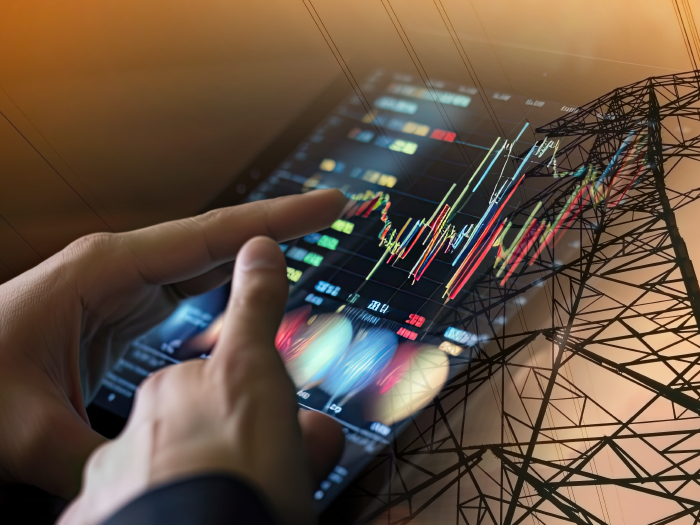
Intelligent demand side response- White Paper
In today’s fast-paced industrial landscape, optimising production schedules isn’t just about meeting deadlines; it’s also about navigating volatile energy prices. Fluctuations in energy costs can significantly impact operational expenses, making it imperative for businesses to devise strategies that mitigate against these costs.
Learn more

